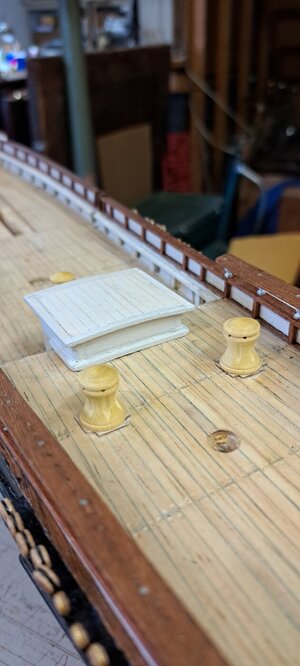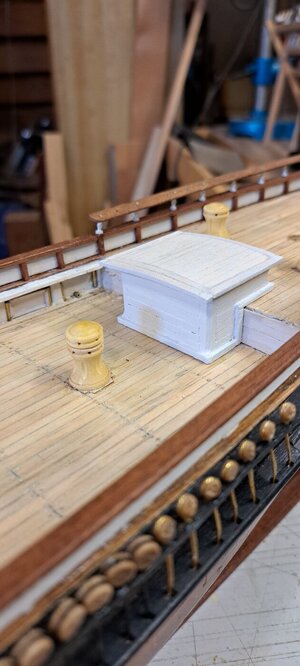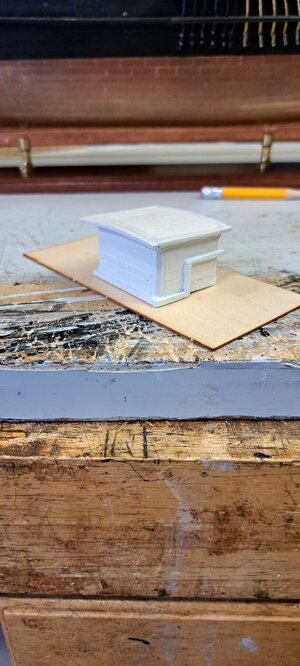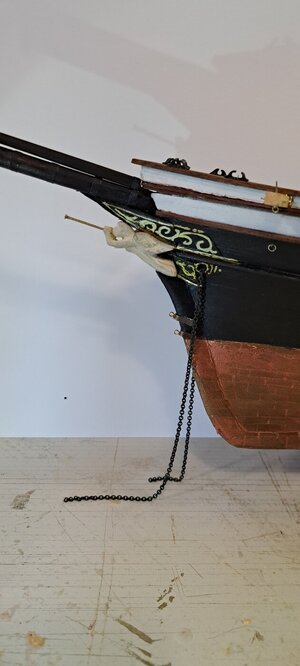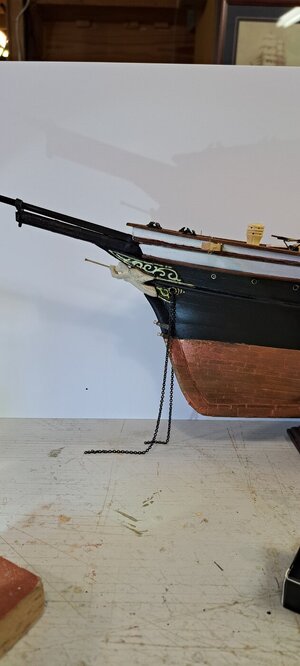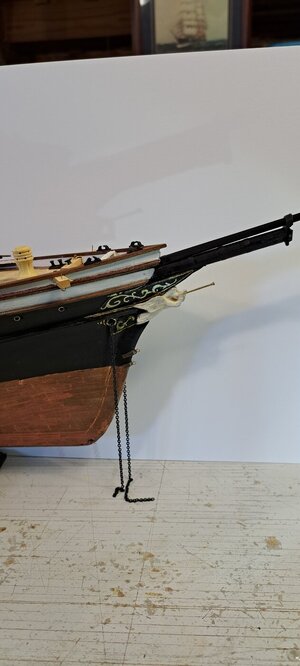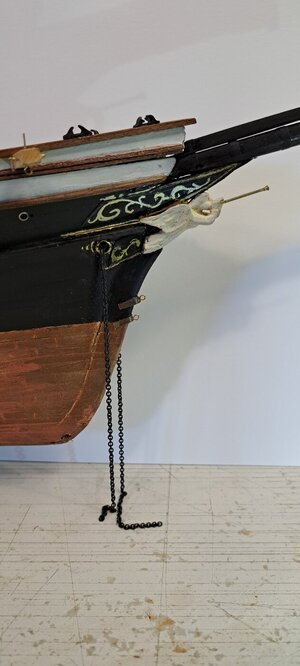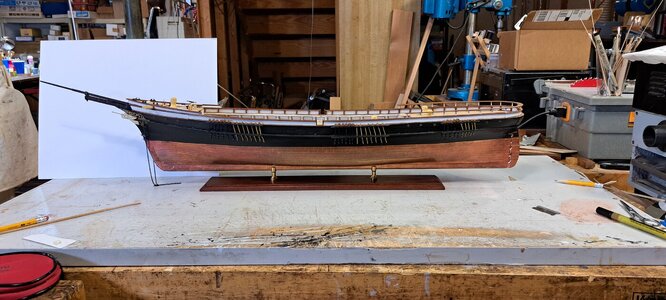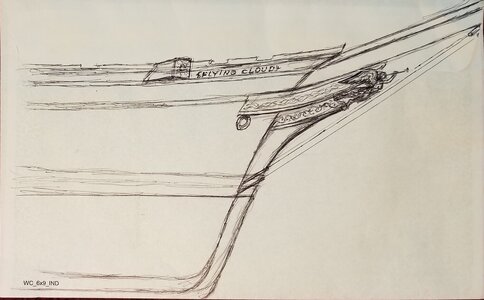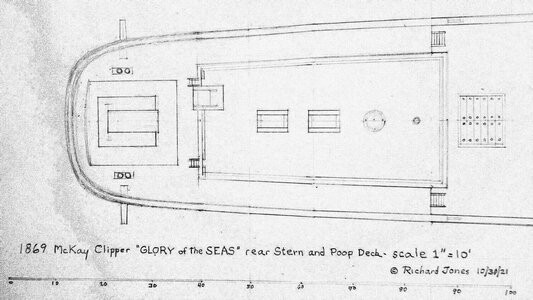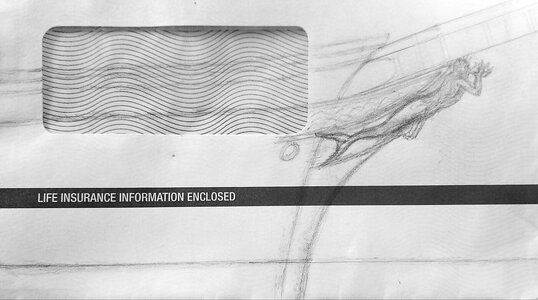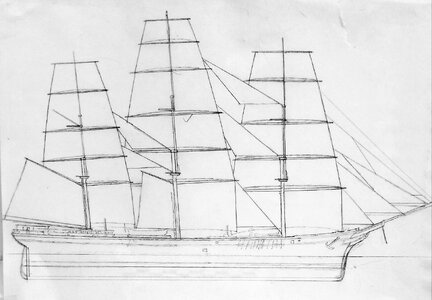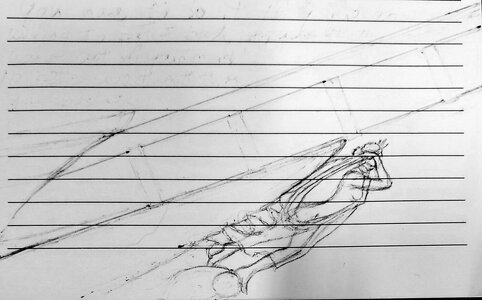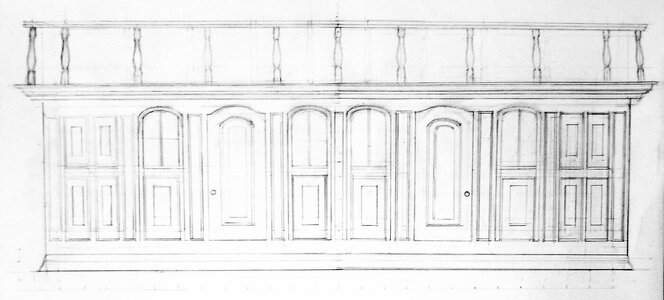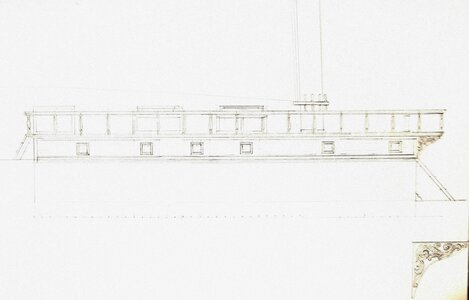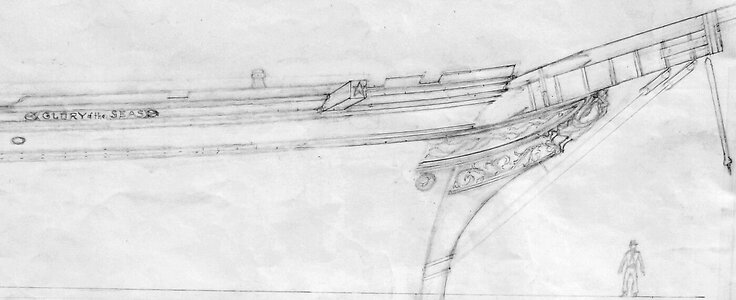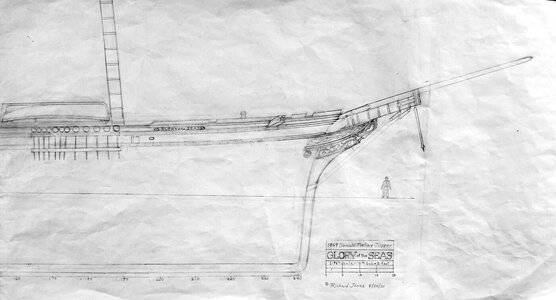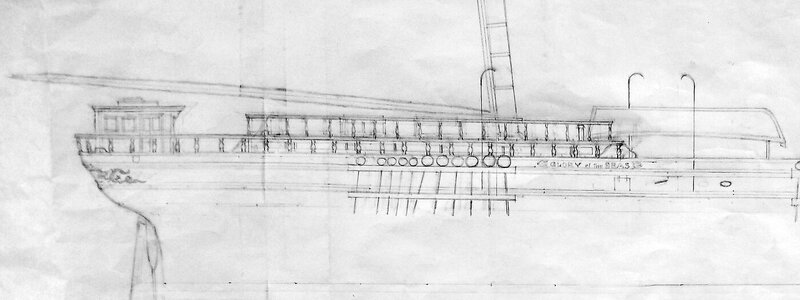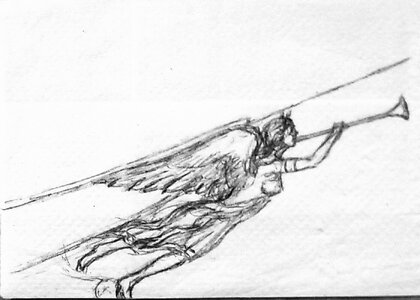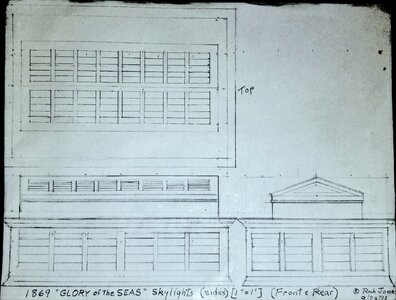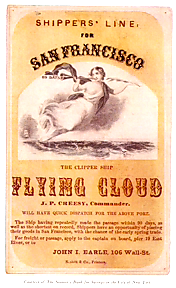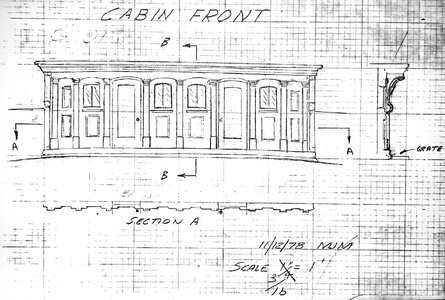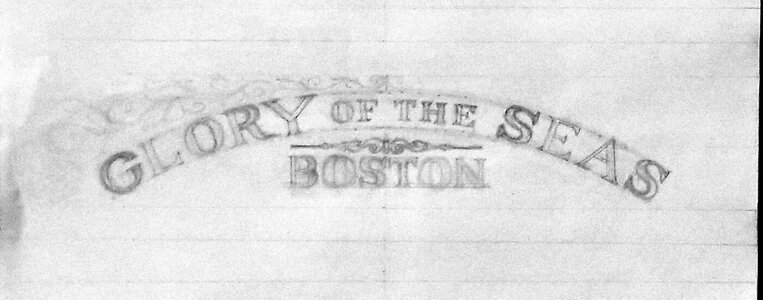Peter,
I've been pursuing reconstruction of McKay's authentic clipper ship appearance for years, since I discovered precise dimensions listed in Duncan McLean's Boston Daily Atlas articles. My winged angel figurehead is based on the description in his article, historic illustrations and the
Flying Cloud advertising poster featuring her angelic figurehead image. I hope to eventually create scale reconstructions of these magnificent vessels.
To help you visualize scale proportions, I'll use
Glory of the Seas as a reference. She was 265 ft long overall from taffrail to knightheads. Her figurehead is 7 & 1/2 feet.
Flying Cloud was 235 ft for the same measurements. Dividing 7.5 by 265 gave me a ratio of .28. Multiplying x 235 resulted in 6 ft 8". So I'd round it up to an even 7 feet. I suspect you'll find your lovely angel figurehead is out of scale. Unless you want to completely revise your existing work to achieve rigid scale accuracy, I'd leave it alone.
These specs come directly from the McLean article:
Flying Cloud had a 30 ft forecastle amidship. Since
Glory of the Seas had a forecastle that was straight across, I would believe
Flying Cloud had the same profile, not the conjectural curved one in the Boucher model. Height above main deck would have been 6 ft, so she would have had iron safety rails in her aft end, with bulkheads on both side trimmed in gothic style cabinet moldings. She most likely would have had dual ladders with iron safety railings. Abaft her foremast, she had a house 41 ft long x 18 ft wide × 6 & 1/2 ft high. This structure had simple sliding doors with gothic moldings, rectangular windows with shutters in the upper section and gothic moldings in the lower section below. She had a main rail which ran completely around the ship's interior, with a 16 inch monkey rail above. In her stern she has a 68 ft poop deck 5 ft high, completely surrounded by turned stanchions. In the center she has a small portico, which covers an entrance to apartments 3 feet below. This would have been most likely an 8 ft high x 8 ft square structure with a 3 & 1/2 ft modestly arched, gothic molded sliding door in front, with 1 & 1/2 wide x 3 ft tall arched windows on both sides, divided by modest pillars with capital crowns and carved cornices on both ends. Most of this structure would have been recessed with about a 3 ft projection to allow clearance for the companionway directly in front. It would have had two 1 & 1/2 ft wide × 2 ft high windows on both sides. There would have been several rectangular windows with shutters around the rest of the sides to provide plenty of light. In between would have been seperated by gothic molded panels. Since this area would have provided an excellent elevated view, I can't see how this portico wouldn't have been surrounded by a railing with turned stanchions. Roof would have had a 3 ft front overhang in front with 1 ft side overhangs, making the area 11 ft x 10 ft. To allow clearance for her dual capstans, I believe this portico would have had a double wide central stairs with turned stanchion railings. She would have had one maybe two 6 ft x 4 ft x 3 ft high skylight seats similar to those installed on
Glory of the Seas.
(1) original clipper
Flying Cloud advertisement. My figurehead illustration draws from this combined with historic images showing her with wings.
(2) November 12th, 1977
Glory of the Seas coach house front facade, illustrated by Michael Mjelde. He captures the pillars with caps better than I did, while my work shows more of the gothic panel moldings.
(3) my
Glory of the Seas stern sketch of her lettering with ornate alcanthus leaf carvings. Note letter font differs from those on her signboards.
Flying Cloud would have followed a similar layout.
View attachment 457952
View attachment 457955
View attachment 457956







